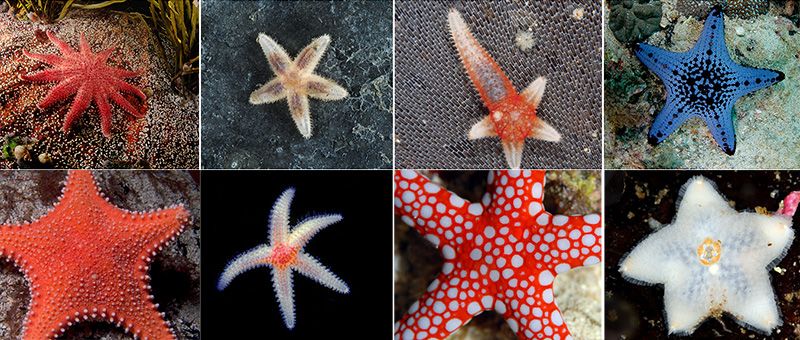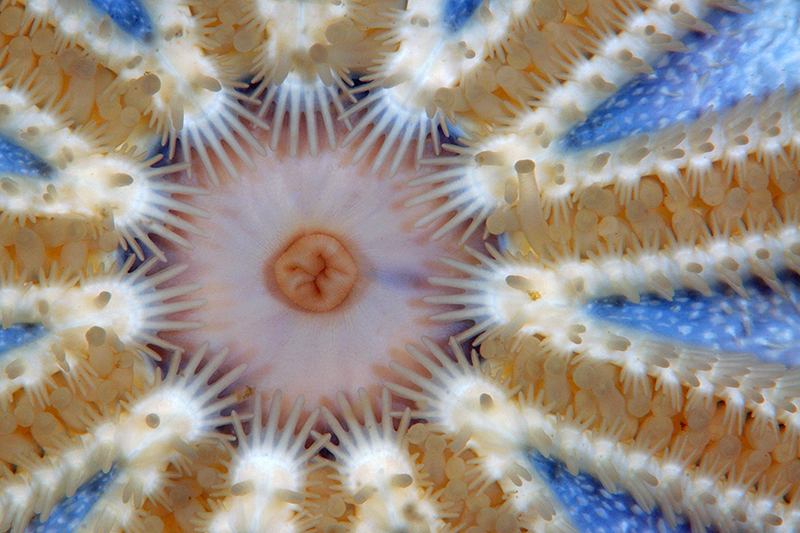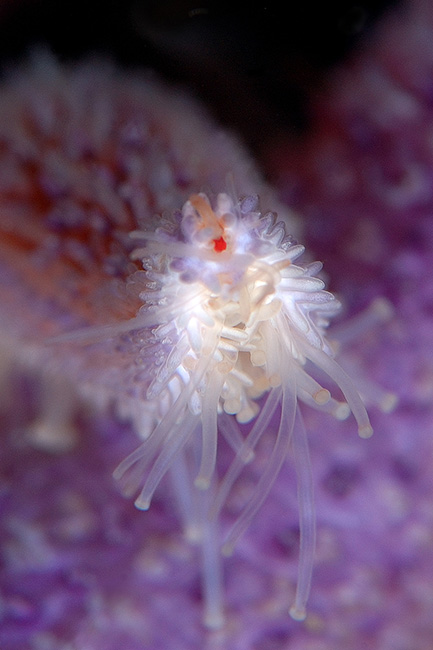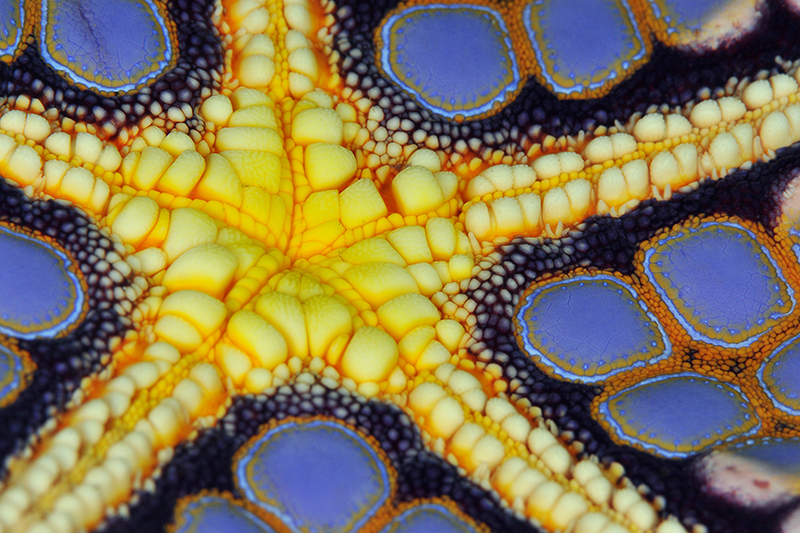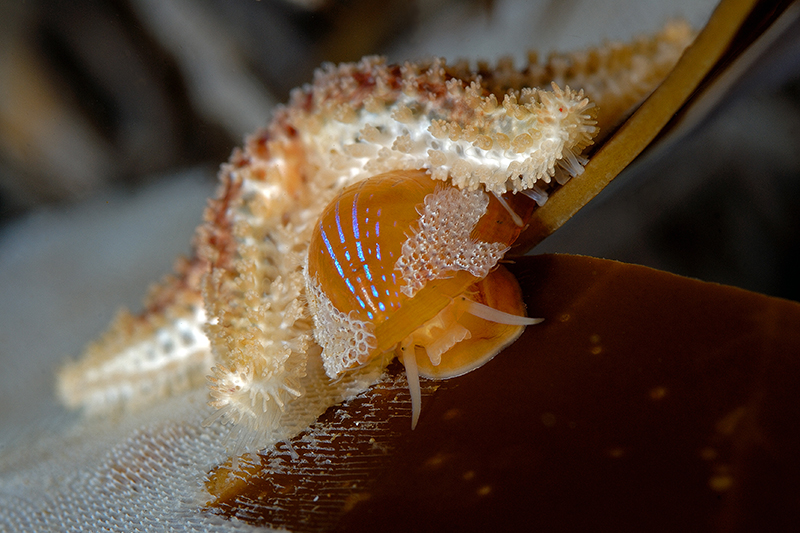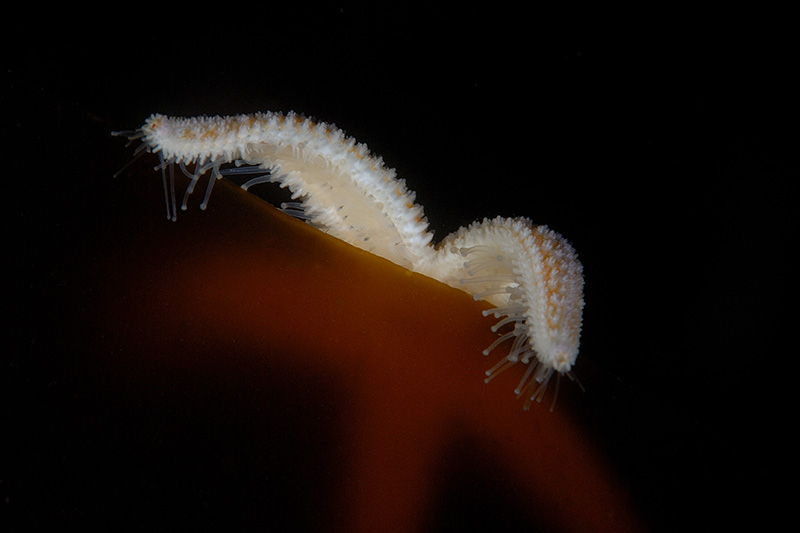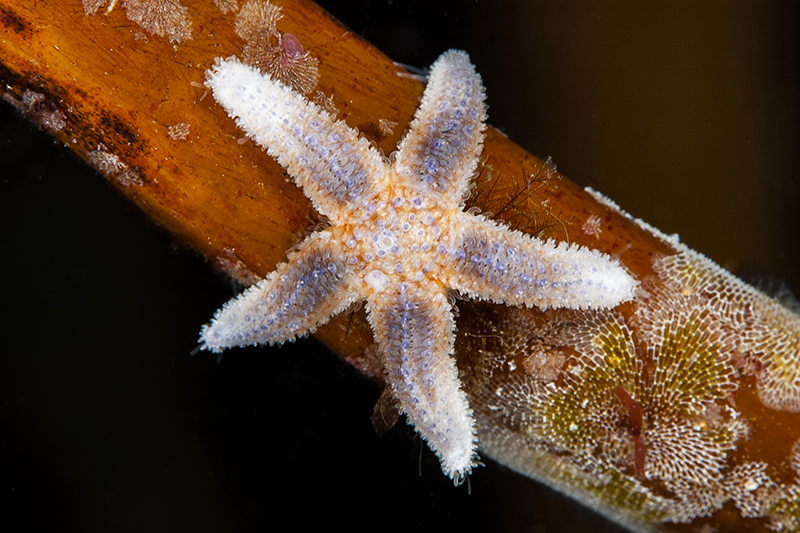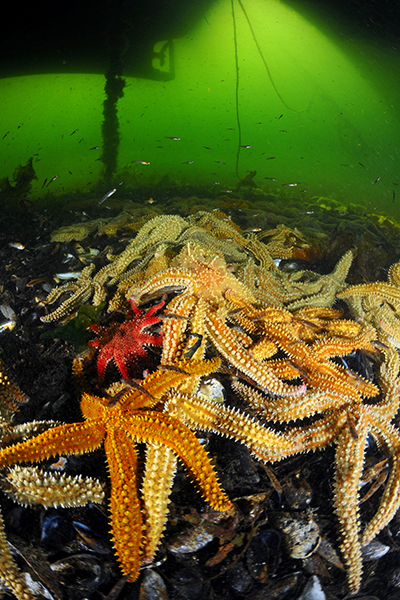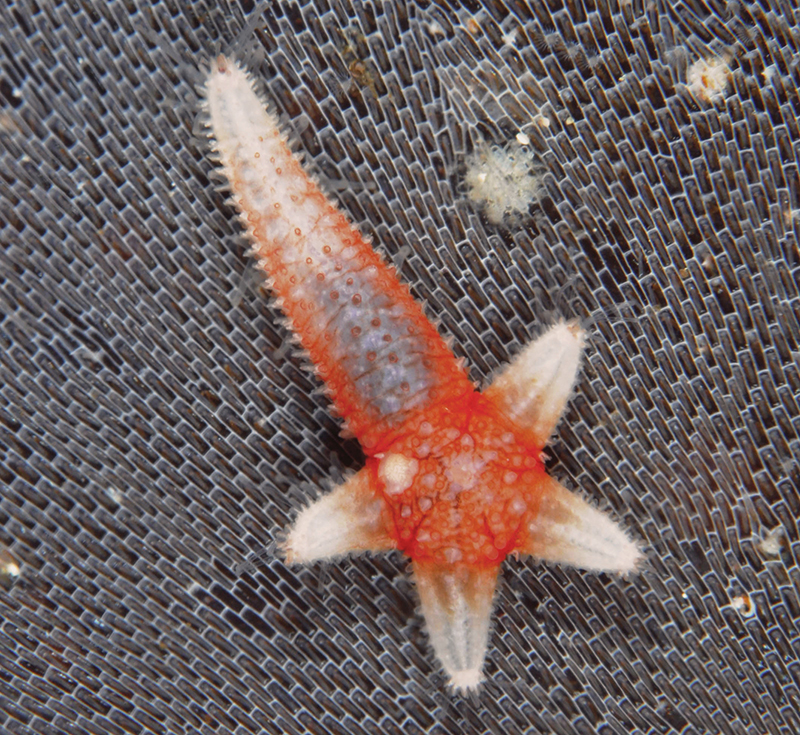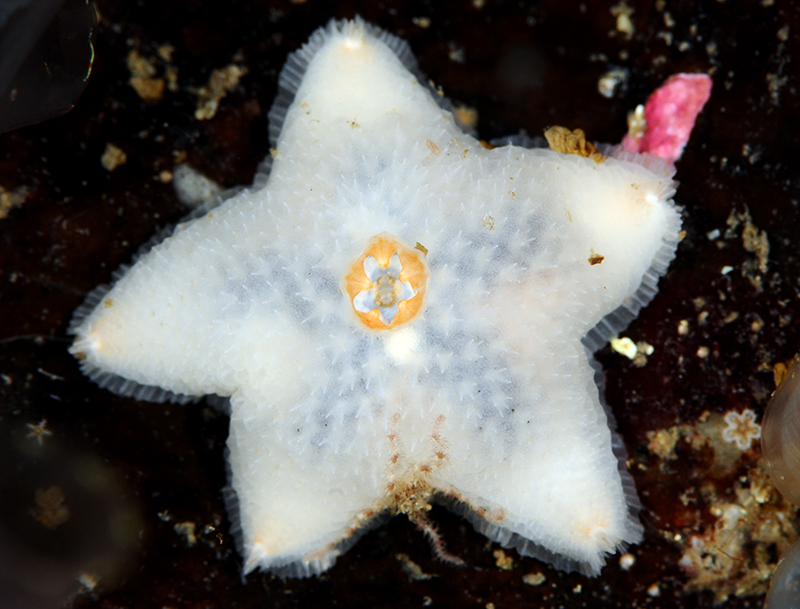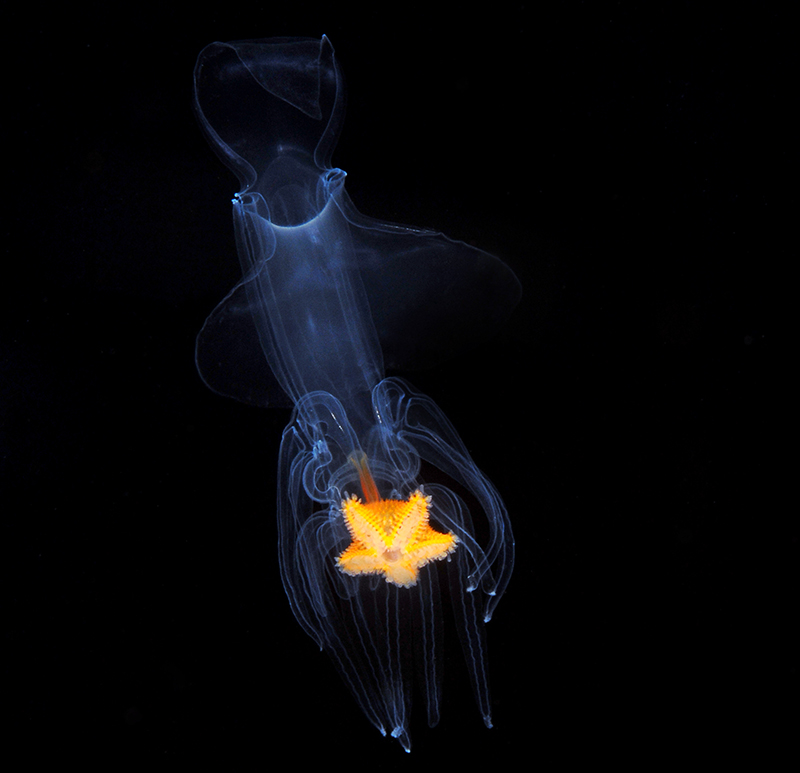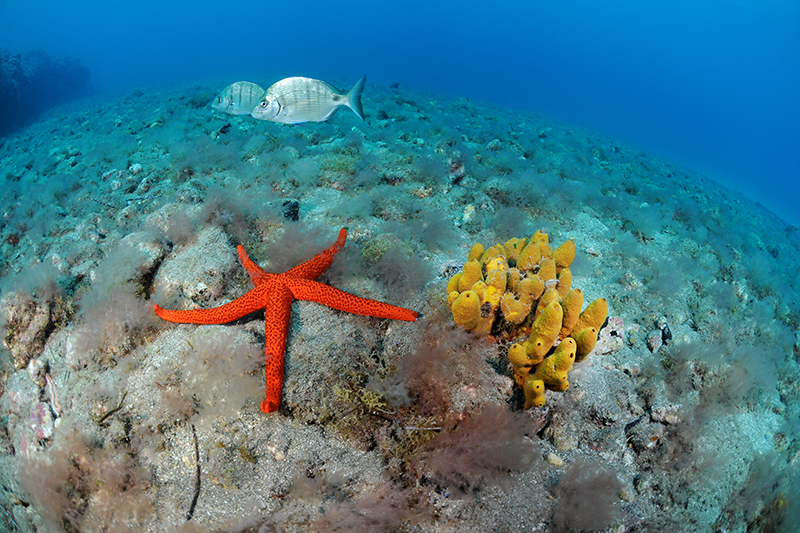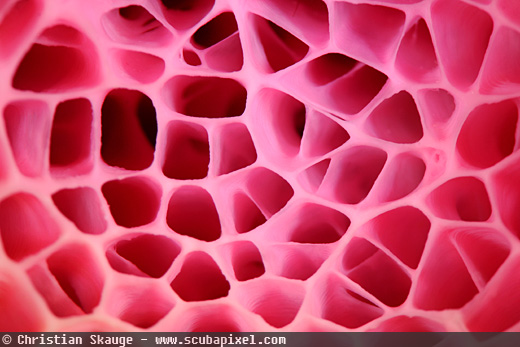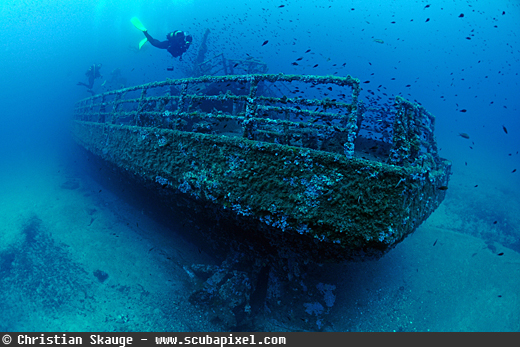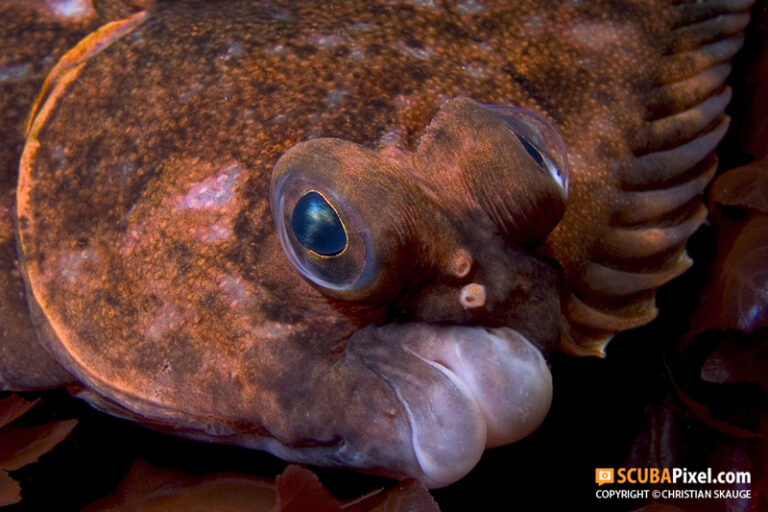
They have up to 40.000 feet, produce millions of offspring and feed with their stomachs outside their bodies. Sounds like something out of a sci-fi movie? You probably see them on every single dive you make!
Sea stars (starfish – but they’re not fish) are a common sight for divers, anywhere in the world. But how much do you know about these slow-moving predators?
They can have from 5 to 30 arms distributed in a radial symmetry, and lack blood, brains, heart and other vital organs. Still, they have conquered the earth’s oceans. Here are some interesting facts about sea stars
1 – Around 2.000 species
Sea stars belong to an animal group called echinoderms, along with sea urchins, feather stars, brittle stars and sea cucumbers. The name literally means “spiny skin”, and the common starfish have around 2.000 cousins around the world. Sea stars have somewhere from 5 to 30 arms, and they display a multitude of interesting features and traits – as well as colors, structures and shapes.
2 – Feeding Inside-Out
Sea stars move quite slowly, but still many species are voracious predators that help themselves to large amounts of mussels. The sea stars will grab hold of the mussel with its suction feet, and keeps bending until the closing muscle of the mussel is worn out. It will then proceed to turn its stomach inside-out and into the mussel, and release enzymes that will dissolve the innards. After a while the mussel flesh liquefies and the sea stars can slurp up the lovely, nutritious soup that remains.
3 – They Can See You
Sea stars are found almost anywhere in any ocean. They thrive in all kinds of habitats, no matter how silty, current-ridden, cold or deep. Sea stars generally live on the bottom, but are able to climb rock walls, pier pylons or even ropes to get to where the food is. On the tip of each arm, many sea stars have a primitive eye able to separate light from dark, and even if it takes a little time they are surprisingly active animals.
4 -Organ Deficiency
Sea stars doesn’t have a heart, brains or even blood. In fact, they don’t even have gills. Oxygen is obtained from papillae on their tube feet as well as on their backs. Despite these “shortcomings” sea stars are a very successful animal group. Since they breathe the way they do, sea stars can be threatened by water pollution.
5 – Shellfish on the Menu
Most sea stars are predators, and some even feed on other sea stars – like the red sunstar. In general sea stars prefer mussels, but even sea snails, bristle worms, jellyfish, coral polyps and sometimes even crustaceans are on their diverse menu. Even animals larger than themselves are in danger of being attacked and eaten – size is not so important when you are able to digest your food before putting it in your mouth. Sea stars quickly congregate in large numbers to scavenge if anything edible falls to the bottom.
6 – Tube Feet
A sea stars can have up to 40.000 tube feet, all controlled through a hydraulic system of water-filled channels inside the animal. This is called a water vascular system, and the feet are placed in two or four rows along an open groove on the underside of the arms. The feet are used for locomotion, to cling on to things and to feed. The power of the suction feet is tremendous, and sea stars never gets tired because they don’t depend on muscles the same way we do.
7 – Radial Symmetry
Sea stars are different from us in many ways. Besides lacking several (to us) important organs, one the most distinct differences is that they are not bilateral (put together of two identical halves) like us – instead they are made up of five identical segments. This five-point radial symmetry is clearly visible in most species. It can also be seen in species with more arms – there will just be two or more arms per segment.
8 – Millions of babies
Sea stars mostly have sexual reproduction and require a mate. When the female release her up to 2.5 million eggs into the water the male answers her call and the fertilized eggs develop into tiny larvae that live mid-water for a few weeks before settling on the bottom. Other species like those in the Solaster and Henricia families lack this larval stage and instead guard their eggs until they hatch as miniature sea stars. Some species are even capable of asexual reproduction and produce offspring all by themselves.
9 – Shooting Stars
The sea stars have an incredible self-healing powers, and they easily regenerate an arm that has been lost to a predator or otherwise been harmed. They are able to survive even if just the central disc remains, and sometimes you can come across sea stars looking like small shooting stars, when one arm is intact and all the others are just small buds waiting to grow out.
10 – Water-powered
The sea stars have a sieve-like opening on their backside, called a madreporite plate. This round, hard and porous opening allows water to be sucked into the water-filled channels in the vascular system to drive the hydraulic tube feet. In a way, you could say that sea stars are water-powered! Scientists also believe that the madreporite plays a role in how sea stars navigate and get their bearings straight.
11 – Eat and be eaten
Despite being predators, sea stars have enemies too. They are being preyed upon by other sea stars, crabs, birds, sea otters, harlequin shrimp and even a few species of sharks. Even seagulls can be seen pecking at sea stars at low tide. Their most dangerous enemy is of course man – in some Asian countries sea stars is considered a delicacy. Want a bite? Despite the name, you won’t get it at Starbucks.
12 – Found in all oceans
Sea stars are found in all oceans of the world. They thrive in all kinds of habitats, no matter how silty, current-ridden, cold or deep. They cannot live in fresh water, because it lacks the calcium they need to produce their bodies. Therefore they are not found in the Baltic Sea and similar bodies of water that have low salinity. The largest numbers are found in the Indo-Pacific region, but they also thrive in the North Atlantic.




